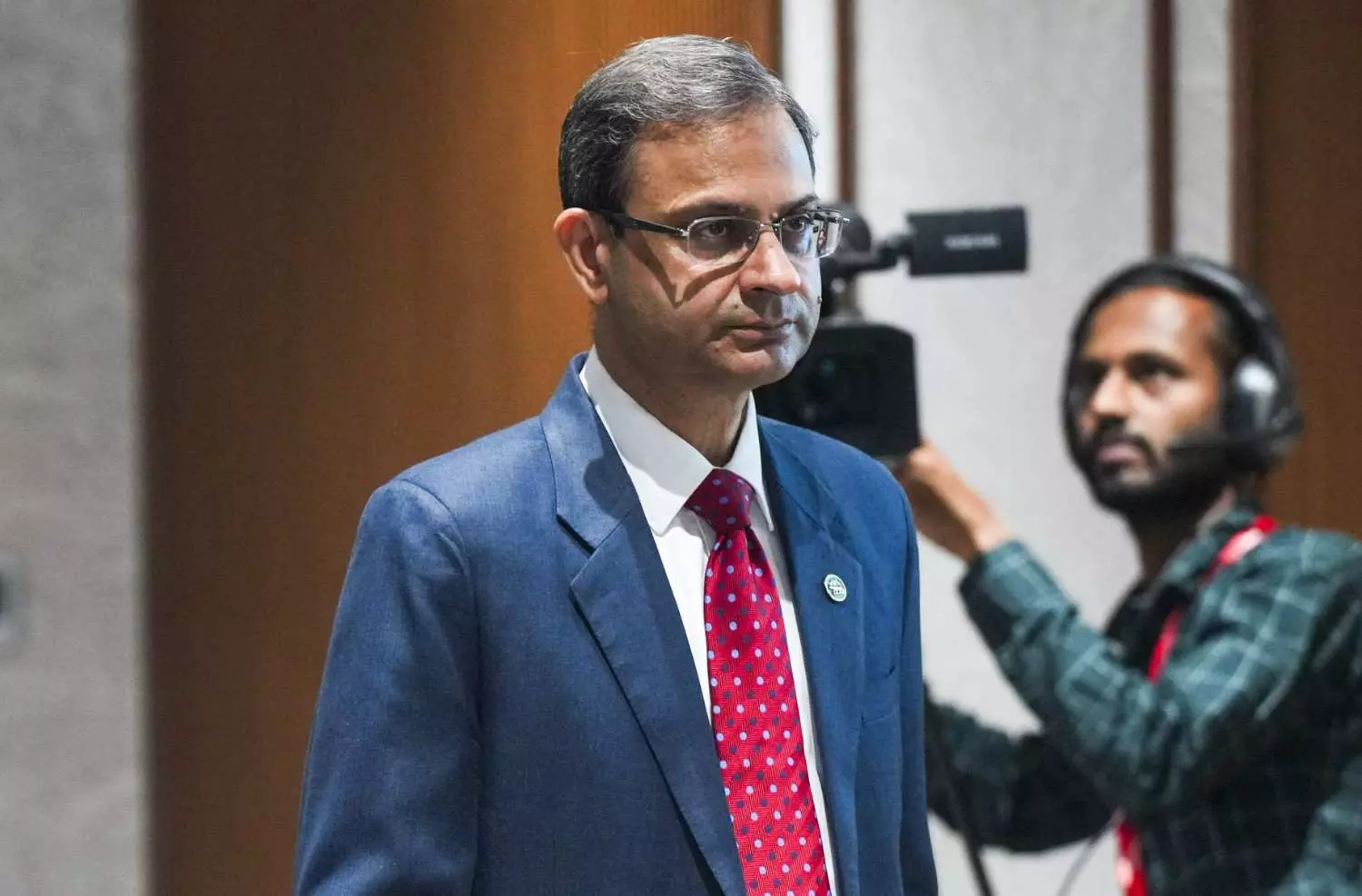
RBI Governor Sanjay Malhotra during a press conference after announcement of the first bi-monthly monetary policy of the current fiscal year, in Mumbai, Wednesday, April 9. PTI
RBI cuts repo rate again: Signal for growth amid global headwinds
The rate cut comes at a time when inflationary pressures appear to be softening, aided by falling crude oil and food prices

In a move signalling a pivot towards a more supportive monetary policy, the Reserve Bank of India (RBI) on Wednesday (April 9) announced a 25 basis point cut in the repo rate, bringing it down to 6 per cent. This marks the second rate cut in the current cycle and a decisive shift to an accommodative stance, underscoring the Central Bank’s intent to prioritise growth amid emerging global uncertainties.
Also read: What RBI's shift in MPC stance from neutral to accommodative means
The rate cut comes at a time when inflationary pressures appear to be softening, aided by falling crude oil and food prices. But at the same time economic risks — such as global trade disruptions and US tariff escalations – are becoming more visible.
Supporting growth while managing inflation
“The RBI’s decision to cut the repo rate by 25 basis points and shift its policy stance to ‘accommodative’ signals a clear intent to support growth amid rising global uncertainties,” said Aamar Deo Singh, senior vice president, research, Angel One. He added that the move was timely and expected, given the easing inflation outlook and recent external shocks.
Also read: ATM withdrawals set to become costlier from May 1 as RBI allows banks to hike charges
Suvodeep Rakshit, Chief Economist, Kotak Institutional Equities, believes this is the start of a deeper rate cut cycle. “We see RBI’s change in stance as an intent for a deeper rate cut cycle... another 75-100 bps of rate cuts in FY2026E is likely,” he said, citing benign inflation expectations and downside risks to growth.
The RBI has also revised its GDP growth forecast for FY26 to 6.5 per cent, signalling cautious optimism. Liquidity conditions are expected to remain ample to support effective policy transmission.
Boost for rate-sensitive sectors
The reduction in borrowing costs is expected to stimulate consumer demand, particularly in interest-rate-sensitive sectors such as housing, autos, and MSMEs. “This can also support discretionary spending,” said Deepak Ramaraju, Senior Fund Manager at Shriram AMC, adding that sectors like consumer durables and real estate are poised to benefit.
Also read: India growth story intact; PSU banks, telcos attractive: Market expert
Despite the positive sentiment, the market reaction was somewhat tempered by the RBI’s mention of forthcoming guidelines for the gold loan segment. Financial institutions with significant gold loan exposure such as IIFL Finance (20 per cent), Manappuram Finance (2.9 per cent), Muthoot Finance (3.6 per cent) witnessed sharp stock corrections as investors reacted to the regulatory uncertainty.
"While we await the details, guidelines to harmonise gold loan practices across lenders augur well for the segment,” said AM Karthik, SVP & Co-Group Head at ICRA Ltd. He noted that the recent surge in gold loan demand — driven by high gold prices and a slowdown in unsecured personal credit — has made the segment a key growth driver. However, he warned that "competitive pressures for NBFCs could increase going forward, which remains monitorable."
Ramaraju also emphasised the volatility, stating that "sector-specific regulatory risks — especially in the gold loan segment — are creating near-term uncertainty."
Mid & small NBFCs get a boost
Another crucial development is the anticipated comprehensive framework on co-lending. “This shall favourably support NBFC AUM growth and enhance formal credit penetration,” noted Karthik. For mid and small NBFCs, in particular, this opens up a path to diversify their portfolios and access funding more effectively in a challenging credit environment.
In a parallel regulatory initiative, the RBI is revisiting guidelines on partial credit enhancements. Anil Gupta of ICRA pointed out that previous limitations had prevented the segment from scaling. “The cap on enhancement and the disproportionately high capital requirements had outweighed the benefits,” he said, expressing optimism about the upcoming revisions.
Overall, the RBI’s second rate cut, accompanied by a clear shift in stance, reflects a calibrated strategy — one that aims to support domestic demand and credit growth while staying vigilant on inflation and external risks. The accommodative stance opens the door for further easing, provided macroeconomic conditions remain favourable, said analysts.

